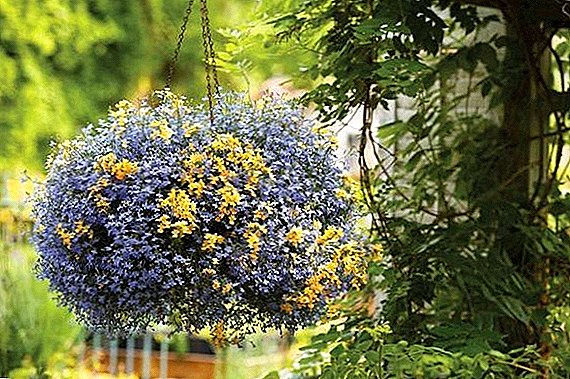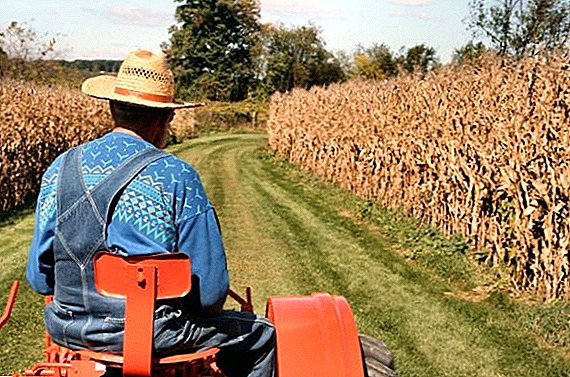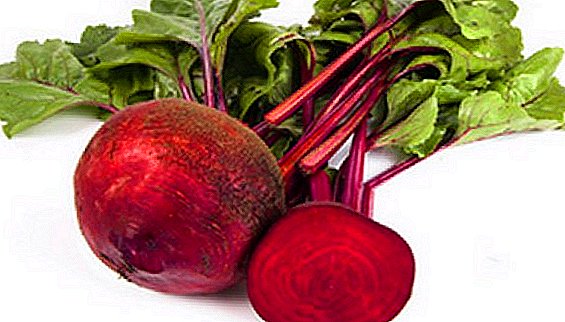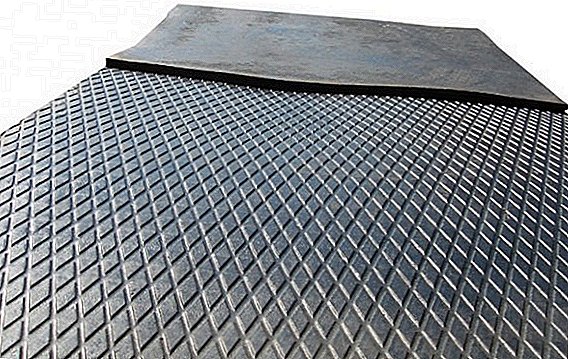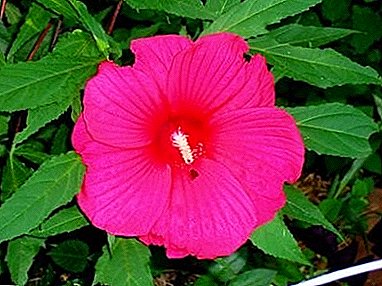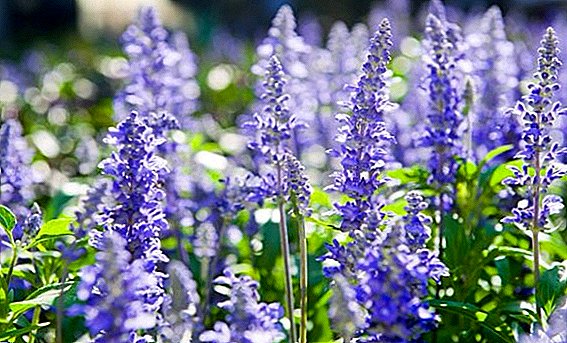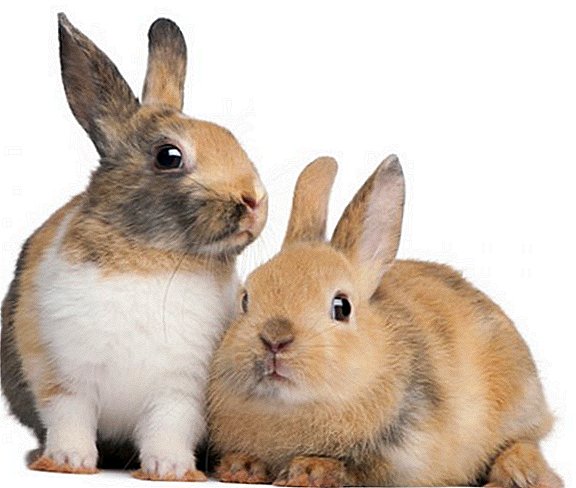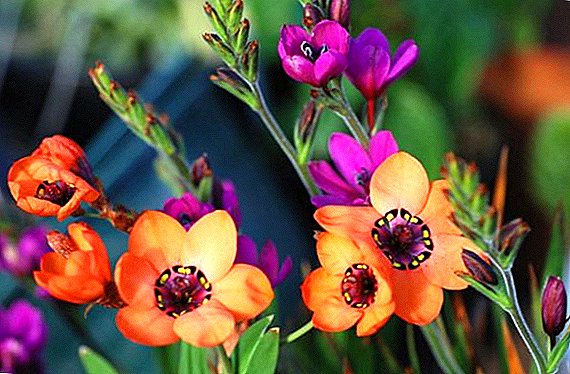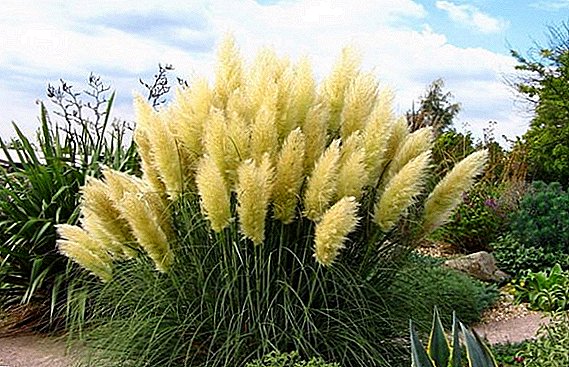 Cortaderia (Latin name Cortaderia) refers to perennial herbaceous ornamental plants of the family Cereal. Its name reflected one of the characteristic external features of the plant - the pointed edges of the leaves, because in Spanish "cortar" is "cut." Cortaderia or pampas grass looks great on the site and for good reason has not yet received wide distribution in domestic cottages.
Cortaderia (Latin name Cortaderia) refers to perennial herbaceous ornamental plants of the family Cereal. Its name reflected one of the characteristic external features of the plant - the pointed edges of the leaves, because in Spanish "cortar" is "cut." Cortaderia or pampas grass looks great on the site and for good reason has not yet received wide distribution in domestic cottages.
Botanical description
In botany, a plant is described as follows:
- stem - height up to 2-3 m, forms thick turf;
- leaves - elongated, linear, pointed, curved arc;
- inflorescence - a very lush panicle of silver color, 30-50 cm long;
- flowers - mostly small, male - naked, female - with a long silky edge look pinkish or silver-white, bloom from August to October;
- dioecious plant - male and female flowers are on different individuals.

Important! When purchasing a sapling, you need to know what kind of cortage is being offered to you. Note that males begin to fade with the onset of autumn, and females do not lose their decorative effect before the onset of frost.
Spread
The plant is cultivated on the territory of North America, Europe and Australia, and in the garden culture is found from the Victorian era. Its dried fluffy panicles are often used in various flower arrangements.
The family Cereals include plants such as chumiz, feather grass, awnless fire, timothy grassland, canary grass, wheat grass, mane barley.
Cortaderia easily adapts to any climatic conditions. In the wild, it is found in South America, where it is a weedy crop and is used to make paper. 
Popular varieties
Cortaderia has many different varieties, the most popular of which are the following:
- Andes silver. Stems - height up to 2 m, inflorescences - white-silver, rather cold-resistant variety, in the north needs shelter for the winter.

- Monstrosa. Stems - height up to 2 m, inflorescences - large and white, leaves - gray-green.

- Patagonia. Stems - height up to 2 m, inflorescences - white-silver, leaves - gray-green, rather cold-resistant variety.

- Pumila. Stems - height up to 1.2 m, inflorescences - snow-white, leaves - gray-green, the most cold-resistant variety.

- Pink feather. Stems - height up to 2 m, inflorescences - pinkish, leaves - gray-green.

- Rosea. Stems - height up to 2 m, inflorescences - white-silver with a slight pinkish tinge.

- Sunningdale silver. Stems - height up to 2.3 m, inflorescences - white.

Application in landscape design
Cortaderia looks great both on the flowerbed and on the lawn. It is well to decorate the unoccupied areas or planted along the recreation area with decorative benches and sun beds. The grass grows easily, turning into whole plantations. It is also used to decorate the coastline of artificial ponds.
The plant is perfect for decorating a waterfall, a fountain, a bed of stones.
The plant is often planted along stone walls or buildings, in this case, the heat from the stone contributes to the good growth of pampas grass. In the design of the garden looks good as a central plant surrounded by other flowers.
It helps to create expressive vertical lines and perfectly combines with decorative stones and garden miniatures.
Because of its size, it needs a spacious plot and coexists beautifully with yarrow, euphorbia, vervain, cosmea, giant rudbeckia, echinacea, as well as various cereals and ornamental herbs. It can be placed as a hedge or as a beautiful backdrop for other plants. 
Growing at home
Cortaderia is an unpretentious ornamental grass that does not require much effort to grow, and is easy to maintain even for novice gardeners.
Conditions of detention
Pampas grass is best grown in open and sunny areas. When choosing a landing site, preference should be given to the site, closed from the wind and drafts. The grass grows well on rocky slopes, but in this case it has less decorative effect and may even stop blooming.
The plant tolerates any conditions well - drought, strong humidity, hot weather or slight frosts. However, for the winter in the middle lane, and even more so in the north, it is better to shelter it.
Did you know? There is a legend in England and Ireland that if a cortaderia grows in the front garden of a house, this is a conventional sign that swingers live here.

Soil and fertilizer
Pampas grass is completely unpretentious and it is suitable soil of any acidity, as long as it is fertile and well drained. Cortaderia lands in a hole to a depth of its root with a landing step of 1.5-2 m.
The pit is digging a little wider than the roots of the seedling; drainage from pebbles, gravel or expanded clay and a pair of compost buckets are placed in the bottom of the pit.
Every year in early spring you should feed the plant with complex mineral fertilizers.
The complex mineral fertilizers include such as "Master", "Kemira", "Sudarushka", "AgroMaster", "Plantafol".
Pruning of flowered inflorescences and dead foliage is done in spring.
Watering and moisture
Pampas grass - a plant that can withstand both high humidity and drought. However, for its normal development requires regular watering. The amount of water depends on the size of the plant; in the hot season, one adult bush needs an average of 1-2 buckets of water every 3-4 days. 
Breeding
Cortaderia is planted in the spring, around the end of March. With planting it is better not to delay, so that the plant has time to acclimatize well.
Seeds
Seeds can be purchased at a specialty store or collected by yourself. Before planting, they need to undergo a process of stratification (hardening), for this they should be placed in a refrigerator for a month. Immediately before planting, the seed should be treated with a weak solution of potassium permanganate.
Seeds are planted in early spring in a tank with a moist universal substrate, sprinkled with earth at 3-4 mm, slightly watered and placed in a warm and well-ventilated place. Shoots will appear in about two weeks. When the onset of heat, they are planted in open ground or taken out into the garden along with tanks.
However, it should be noted that this method of planting has a big minus - the plant will bloom only in five years. 
Did you know? Pampas grass produces a lot of seeds. For example, one such plant during its life can form more than 1,000,000 seeds!
Vegetative
Cortaderia grows very well, so problems should not arise with vegetative reproduction. The bush is divided after frosts - at the end of winter or early spring, for which the aerial part of the plant is cut with shears and the bush is dug out.
Next, you need to carefully divide it into separate processes and land in prepared holes.
For planting, small pits are digging no more than 40 cm in depth and width when the distance between seedlings is 1.5 m. At the bottom of the pit it is necessary to provide drainage from pebbles or gravel, also to fill manure, compost or peat. Carefully, trying not to damage the roots, plant the plant in the ground. Sprinkle with earth and water well. 
Wintering
Cortaderia tolerates cold quite well, but does not like it in combination with considerable humidity of the earth and air. Therefore, in order for the plant to survive the winter normally, it must be covered with a layer of dry foliage and grass.
In mid-autumn, the plant should be cut by 30-40 cm or tied with a rope. Next, cover the covering material with a layer of about 40 cm on the basal hole.
If the cottage is located in the northern regions, it is better to additionally warm the plant from above with a film or warm cloth. This will protect the cortaderia at temperatures down to -25 ° C.
Possible difficulties in growing
As with any plant, you need to take care of pampas grass. 
For this you need to know what difficulties may arise to prevent them:
- do not forget about the cutting edges of leaves and hard stems, all care and pruning should be done carefully and with gloves, and also not plant a plant near footpaths and playgrounds;
- reducing the decorative effect and reducing the number of flowers may indicate excessively stony soil;
- the plant may die if it is not covered for the winter, especially in the northern regions.
Important! To give the cortaderia a decorative shape, it is necessary to periodically cut it. Do not forget to work exclusively with gloves, so as not to get hurt with the sharp edges of the leaves.
Pests, diseases and prevention
Cortaderia is practically not subject to any diseases and pests. Aphid, powdery mildew and anthracnose (leaf spot) can appear extremely rarely on plants. As a therapy, plant treatment with fungicides is used. 
In hot and very dry weather, the grass can be attacked by a spider mite. To avoid this, in order to prevent in the spring and summer is carried out spraying insecticides.
If you just can not decide how to decorate the cottage or the soil of your site is not suitable for all ornamental crops, do not be discouraged. Spectacular and unpretentious Cortaderia adorn any garden.
It looks great as a separate planting, and in combination with other cereals. And will certainly attract the attention of all your guests.


